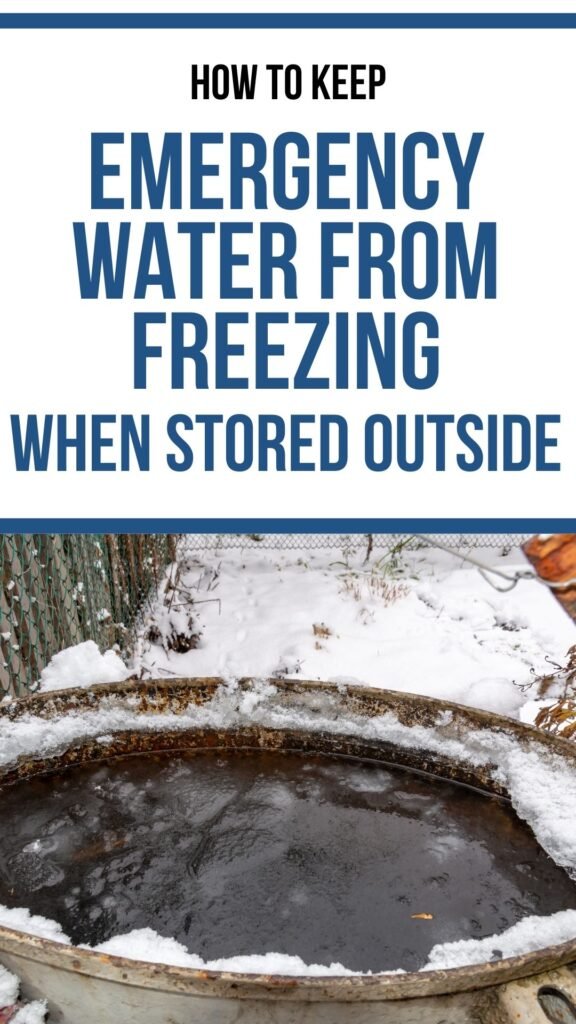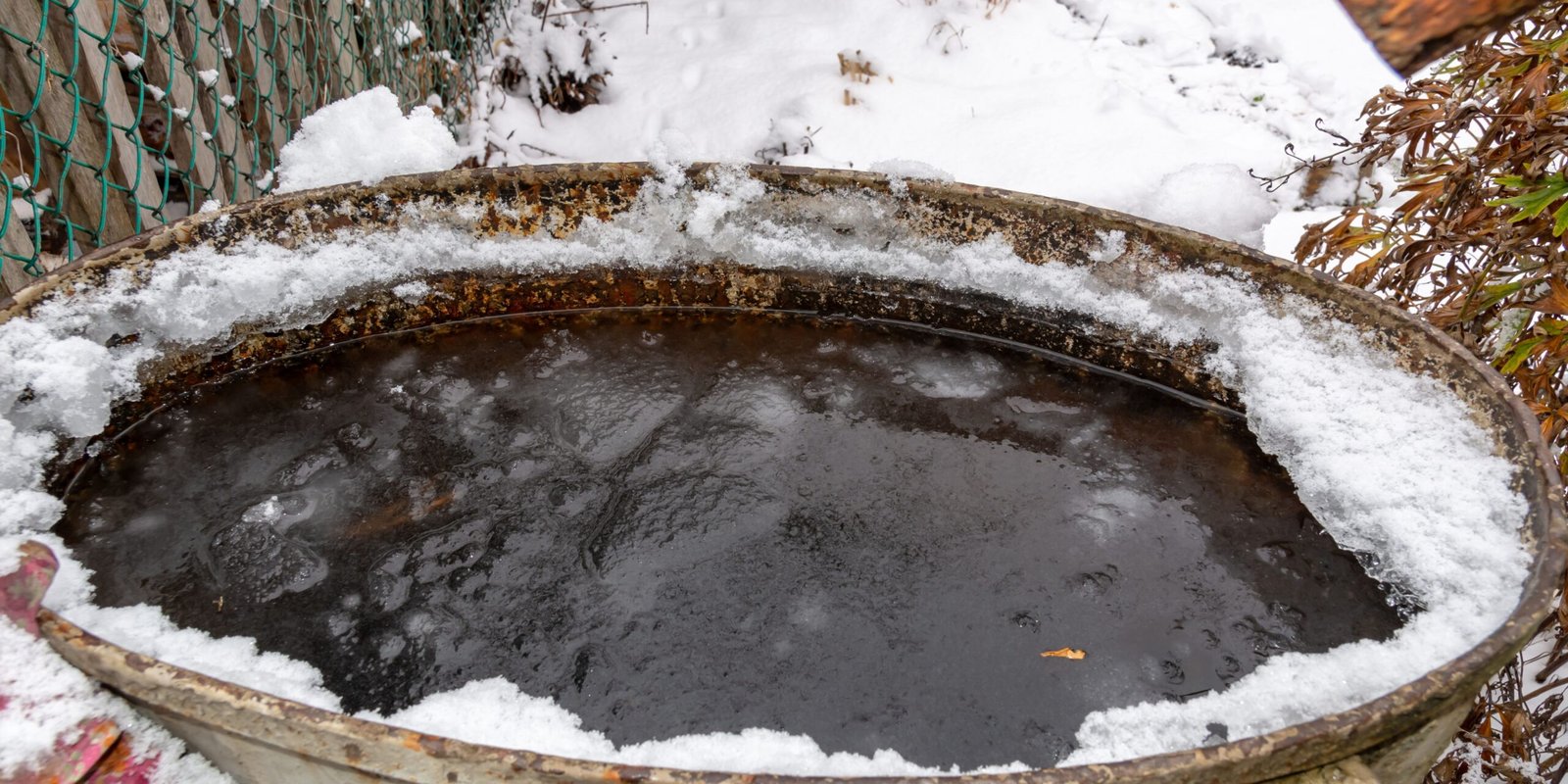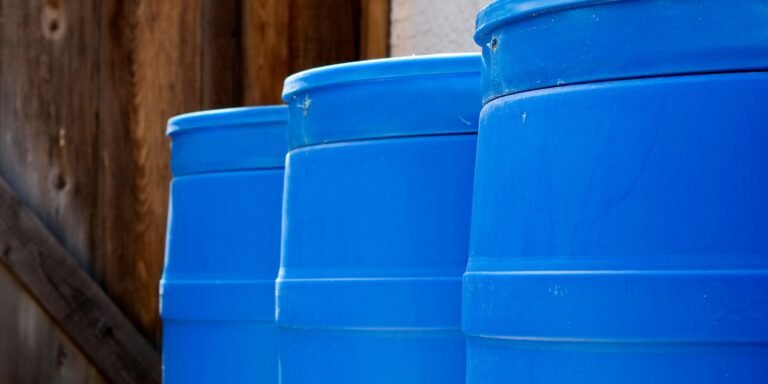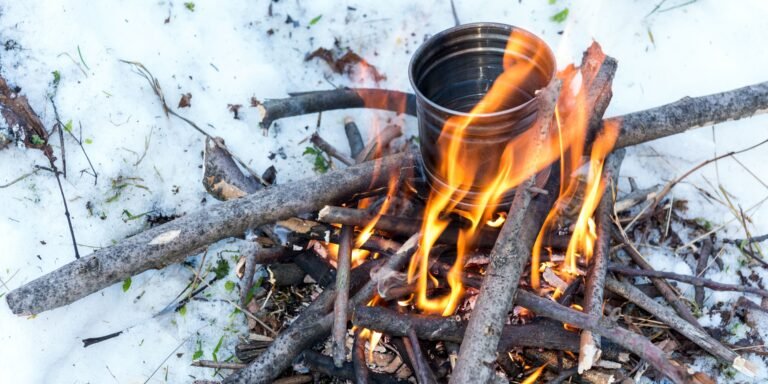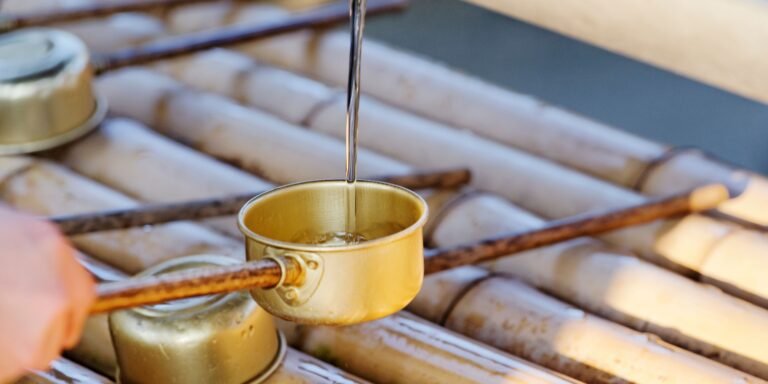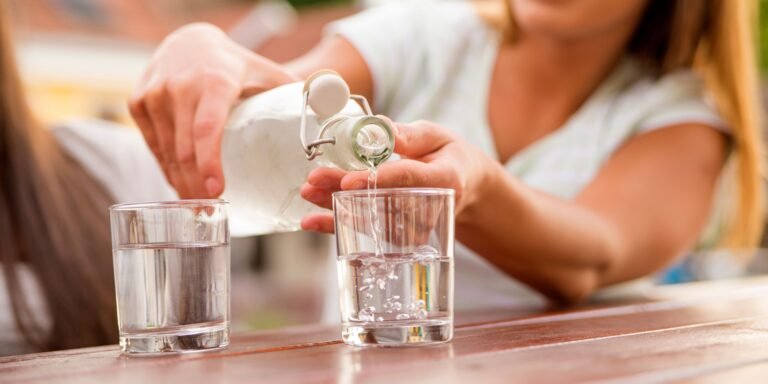How to Keep Emergency Water from Freezing Outside
This post may contain affiliate links, full disclosure here.
Because water is necessary for survival, keeping your outdoor emergency water from freezing should be a top priority on your to-do list. Although it is preferable to store emergency water indoors, this is not always possible. I’ll go through some of the issues that come with storing water outside in the winter, as well as how to protect emergency water from freezing, in the sections below.
Why You Shouldn’t Let Your Emergency Water Freeze
It doesn’t take a rocket scientist to figure out that frozen water is bad news in an emergency. The issue is more serious than the slight inconvenience it may create in ordinary life. Frozen water is a health risk and can cause considerable property damage in an emergency.
Dangerous To Drink
We’ve all heard the survival tip to stay away from the snow. Your frozen water supply is in the same boat. When you eat ice, your core body temperature decreases. This can swiftly lead to uncontrollable shivering, hypothermia, and death in a winter survival situation.
Water Expands When Frozen
People don’t immediately think of danger when they see the slowly freezing water in their ice cube trays. However, the fact with ice is that if you don’t prepare it properly, it can and will harm or completely destroy whatever you’re storing it in.
When water freezes, it expands by around 10%. Freezing water can lead to burst pipes, exploding water bottles, and cracked emergency water barrels, to name a few issues. Imagine how disastrous a burst pipe would be in an emergency circumstance when you’re reliant on it for your survival.
Can Get contaminated
When water freezes, it has a significant chance of becoming contaminated. This is primarily due to water expanding when it freezes, putting stress on pipes, seals, and other components of your water system. Your entire emergency water supply could be compromised if even a minor crack develops in your system.
You won’t realize it’s infected until you’ve eaten it and been ill. Yes, parasites and bacteria can lie dormant in ice for long periods of time before reviving once thawed. Because you might not have access to an electric stove, a camp stove, or even a simple survival fire, your prospects of purifying that block of ice that served as your emergency water are slim.
Takes Energy to Thaw
You could place an ice cube on your desk right now and watch it melt. You’re not in a hurry, and the temperature in your house or office is usually comfortable. You also don’t have to drink the melted ice; you’re just having a good time.
It’s certainly pretty cold both outside and inside your home when you need to turn to your outdoor water source in an emergency. Any method you come up with to melt the ice that used to be your water supply will take a lot of energy. You may use that energy to do something else, like heating up the inside of your house.
While indoor emergency water storage is wonderful, I wouldn’t be a very good prepper if I didn’t have some outside water storage options as well. I, like many other preppers, keep a big amount of my emergency water outside in enormous tanks. I do this because I don’t have much extra space inside my house and I want to keep enough of water on hand just in case.
Some techniques for keeping your outdoor emergency water from freezing require a little more thought and money, but they can produce superior results. If you’re short on time, money, or space, I have a few suggestions for you.
Tips to Keep Emergency Water from Freezing Outside
Store Underground
To begin, determine how deep the frost depth (sometimes known as the “frost line”) is in your area. This is the predicted depth at which groundwater will freeze. This information is frequently used by builders when planning the construction of home foundations and other constructions.
This information can be obtained from your local building department or by visiting this website to get a broad sense of the frost depth in your location. Once you’ve established that depth, store your water below it to keep it from freezing.
Underground and Below the Frost Depth Water Storage Ideas:
- A water storage tank buried beneath.
- Water is stored in airtight containers (such as 55-gallon barrels).
- Large PVC pipes with both ends capped and full of water.
- Restock caches with emergency water, food rations, and other necessities.
Make sure the top of your container is below that frost depth, regardless of how you store water underground. You don’t want any part of it to protrude above the ground, therefore measuring properly is essential. If you’re unsure, bury it deeper than you think you’ll need.
You won’t be taking up valuable room in your shelter because your water supply is safely beneath. It’ll also be guarded against looters. The primary disadvantage of this method is that your water is difficult to transport. You’ll also need to build your shelter close to your underground water storage if you want to have secure and easy access to it.
Use Your Greenhouse
Even in the winter, greenhouses are frequently significantly warmer on the inside than the outside temperature. Keep a compost pile or open-top bin within the greenhouse to raise the temperature even more.
Compost piles can reach temperatures of 170 degrees Fahrenheit. Even if your compost doesn’t get very hot in the winter, even a modest increase in temperature can keep a huge water tank warm enough to avoid freezing.
The greenhouse method also allows you to grow food in the winter, sleep comfortably, and stay dry during storms. The warmth and the compost itself will attract rodents and other vermin, which is a huge disadvantage. You’ll have to be on the lookout for these obnoxious visitors.
Utilize Steel Tanks
Even if you can’t bury your water tank underground, there are still ways to keep your emergency water from freezing when it’s above ground. Large steel tanks, for example, can be used to absorb heat from the sun.
To make this procedure more effective, do the following:
- Ensure that your tank receives the most sunlight possible. The more sunlight your water tank receives, the better. Make sure it’s in the open or in a location where it won’t be shaded. For those of us in the United States and other northern hemisphere countries, southern exposure is ideal.
- Make your water tank black by painting it. We all know that dark absorbs light (or energy), but light hues such as white reflect it. By painting your tank black, you can ensure that it absorbs as much heat as possible from the sun.
- Insulating your water tank is a good idea. You can wrap your water tank in insulation from your local home improvement store if you have the funds. You could also use foam, extra blankets, or even old newspapers in a pinch (as long as they can be kept dry). Any insulation will aid in the retention of any heat collected by the container.
- Placing your tank such that it is in contact with your home’s exterior wall. Of course, only do this if it is structurally safe (remember, water is heavy – over 8 pounds per gallon). In the winter, your home is likely to be significantly warmer than the weather outside. When your water tank is firmly fastened against the outer wall of your home, it acts as a “heat sink,” allowing your tank to absorb some of the warmth from the wall. It won’t make a big difference because your house is probably well insulated, but every little bit helps.
This strategy is highly dependent on your region and the lowest temperatures that can be expected. The larger the tank, like with the underground approach, the slower the freeze. If you live somewhere that doesn’t receive a lot of sun, this won’t work as well for you.
Store Water In The Car
It goes without saying that you should keep a bug out bag (BOB) in your vehicle. A personal water supply should always be included in your BOB, but don’t stop there. Keep extra water bottles in the cab of your car rather than the trunk.
When you start the car, the water will warm up. The heat will be retained in the cab for a long period, reducing the risk of frozen water. This is particularly true if you intend to sleep in your car. The heat from your body will assist keep the car warm and the water from freezing.
Water should be kept on the seats, not the floor, for the best results.
Use Camping Cooler
In a pinch, one of my favorite methods is to use a standard camping cooler. In the winter, the same attributes that keep my beer and soda cold in summer will keep my emergency water from freezing. The key to success with this strategy is to only open the cooler when it’s absolutely necessary—cold air sinks, so every time you open it, the cold air around you rushes inside.
However, you can “recharge” the warmer air within by opening it near a fire or camp stove. If your cooler has a metal liner, place a heated stone from your fire inside a container or heat-resistant jar, then place it inside the cooler to keep your water from freezing.
Be Careful Of Additives
I’ve never discovered a reliable or safe water addition that prevents freezing in all my years of preparation. The main problem with using addition to keep your water from freezing is that you’ll end up drinking anything you add. Either that, or you’ll need a quick means to get rid of the additive before you consume it.
Alcohol
I’ve heard of preppers putting alcohol in their water, but I’m not willing to attempt it. While it may keep you from freezing, it’s commonly known that alcohol and cold-weather survival do not mix. Alcohol not only makes you make bad decisions, but it also has long-term consequences on your body, which can lead to health problems. The blood vessels near your skin dilate when you drink alcohol. This draws blood and heat away from your core, reducing your core temperature and putting you at risk of hypothermia.
Sugar
Sugar additions have been suggested by some preppers as a way to avoid freezing. You only need to glance at Popsicles to disprove this notion. The majority of low-cost pop-ice desserts are nothing more than colored sugar water. What’s more, guess what? They freeze perfectly.
Salt
Finally, the most repulsive recommendation is to add salt to your drinking water. First and foremost, disgusting! That’s not going to be a pleasant experience. Second, the amount of salt required to prevent ice formation is potentially hazardous. Drinking salt water is never a smart idea, as every survivalist should know. Dehydration will be exacerbated by the salt content, and too much sodium can cause heart and kidney problems.
If you ask me, adding additives isn’t a good idea. I’m going to forego it until I see some scientific research on reliable (and safe) water additions to prevent freezing. There are several methods for keeping water from freezing without causing kidney injury or dehydration.
FAQ
What is the best way to store emergency water?
Every six months, replace the stored water. Keep the water you’ve saved in a cool place (50–70°F). Keep water containers out of direct sunlight. Water containers should not be stored in regions where harmful compounds, such as gasoline or pesticides, are present.
What is the best way to store water bottles?
Store bottled water at room temperature or lower, away from solvents and chemicals like gasoline, paint thinners, home cleaners, and dry cleaning chemicals, and out of direct sunlight.
How do you store frozen water?
Water can also be frozen for later use. When electricity is off for an extended period, frozen water has the extra benefit of helping to keep frozen food cold for longer. When storing water in the freezer, only use plastic containers because the glass may not be able to handle the strain of expanding ice.
How to Keep Emergency Water from Freezing Outside Bottom Line
Whether you’re storing big amounts of water or require portable solutions, you’ll need a water bottle, canteen, or thermos at some point. From the top-down, water freezes. So, with the lid at the bottom, keep those personal water jugs upside down. Guess what’ll be frozen solid when you need a drink if your lid or drinking spout is pointing up?
